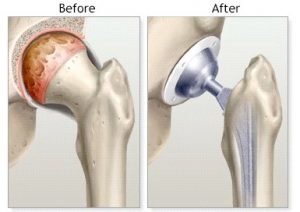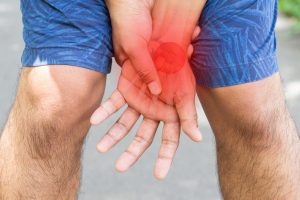You may have seen in the news Prince Phillip has just returned home from having a Total Hip Replacement. You may have been wondering why he had this operation done, what does this involve and what sort of prognosis can you expect?
The majority of hip replacements are performed due to natural wear of the hip joint over time. This causes the bony joint surfaces to rub together, causing pain and making certain activities difficult. Exercise, weight loss, medication and using a walking aid can help to ease the discomfort, but the only way, at present, to remove the pain completely is through having the joint replaced.
 During this operation, the head of the thigh bone is removed and replaced with a stem with a ball shaped head (these components can be made of many different materials and a good surgeon will discuss the best options for you) and a metal cup with plastic insert is fitted into the socket region on the pelvis. These fit together nicely to allow natural movement at the hip. You should be seen by a physiotherapist on the day of your surgery, to guide you to get onto your feet. You can normally put as much weight as you can tolerate on the new hip. You will be walking around the ward and up and down stairs comfortably within a day or two and stay in hospital between 2-4 days after surgery. You will generally go home with crutches or sticks, and can walk up and down stairs and outside after the operation.
During this operation, the head of the thigh bone is removed and replaced with a stem with a ball shaped head (these components can be made of many different materials and a good surgeon will discuss the best options for you) and a metal cup with plastic insert is fitted into the socket region on the pelvis. These fit together nicely to allow natural movement at the hip. You should be seen by a physiotherapist on the day of your surgery, to guide you to get onto your feet. You can normally put as much weight as you can tolerate on the new hip. You will be walking around the ward and up and down stairs comfortably within a day or two and stay in hospital between 2-4 days after surgery. You will generally go home with crutches or sticks, and can walk up and down stairs and outside after the operation.
To achieve the best outcome after a hip replacement, it is very important to strengthen the muscles around the new joint and teach the body how to use the hip properly again. No doubt you will have been limping or walking unevenly prior to the surgery due to the discomfort, and this can lead to bad habits and increase stress on your back or any of the other joints in either leg. Improving the way you move through guided exercise is important to preserving the life of the new prosthesis and getting you back to safely performing activities or hobbies you enjoy. Exercise can help reduce stiffness and increase flexibility and strength as well as reducing the chance of the prosthesis loosening and putting you at risk of injuring yourself  or even needing another joint replacement.
or even needing another joint replacement.
After a joint replacement, with the right guidance, activities like walking, swimming, golf, cycling, tennis, weight training and even some winter sports are achievable. In fact, in an effort to promote sport after joint surgery, the British Hockey Association are organising a match with a team of people who have had their hip replaced versus a team consisting of people who have had a total knee replacement.
Whilst I doubt Prince Phillip will be participating in this hockey match, his new hip should give him a new lease of life and allow him to keep active in his retirement away from the public eye.




Comments